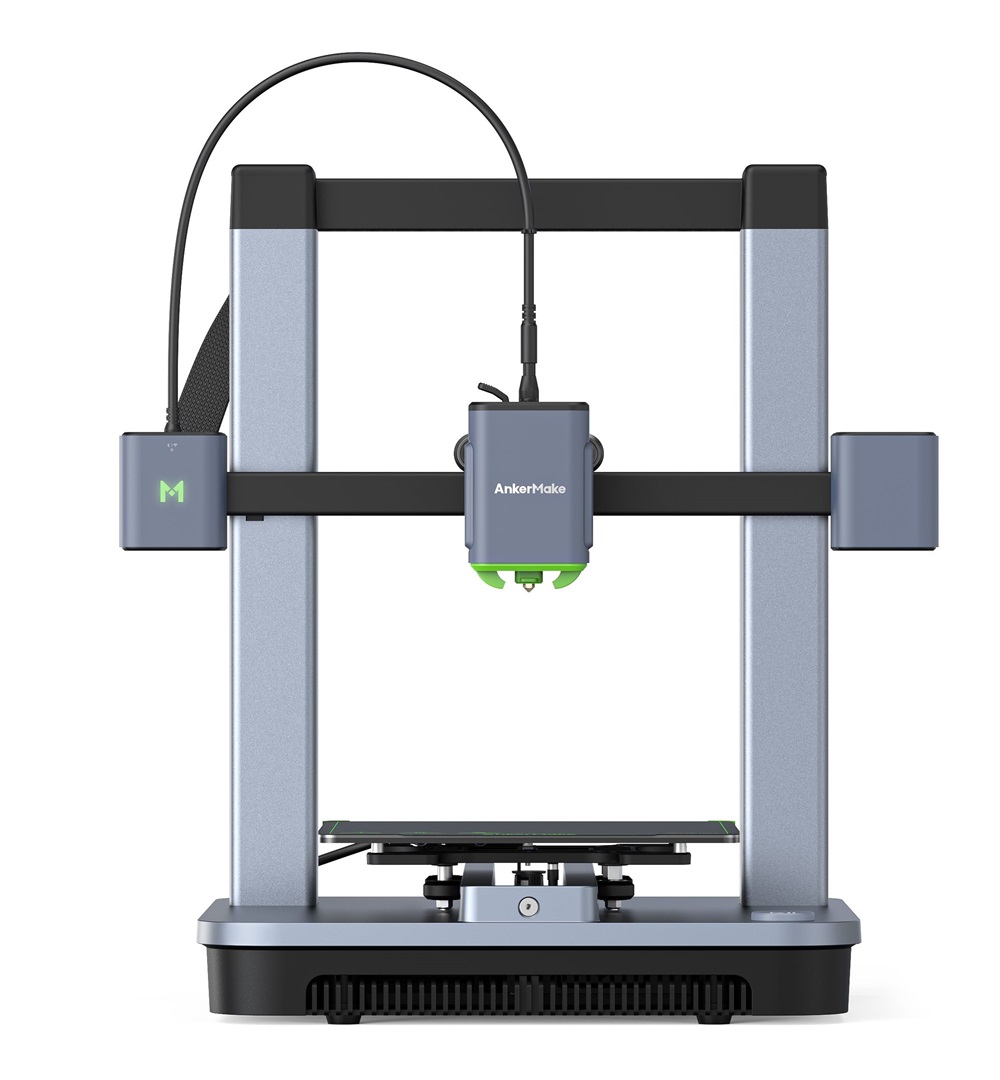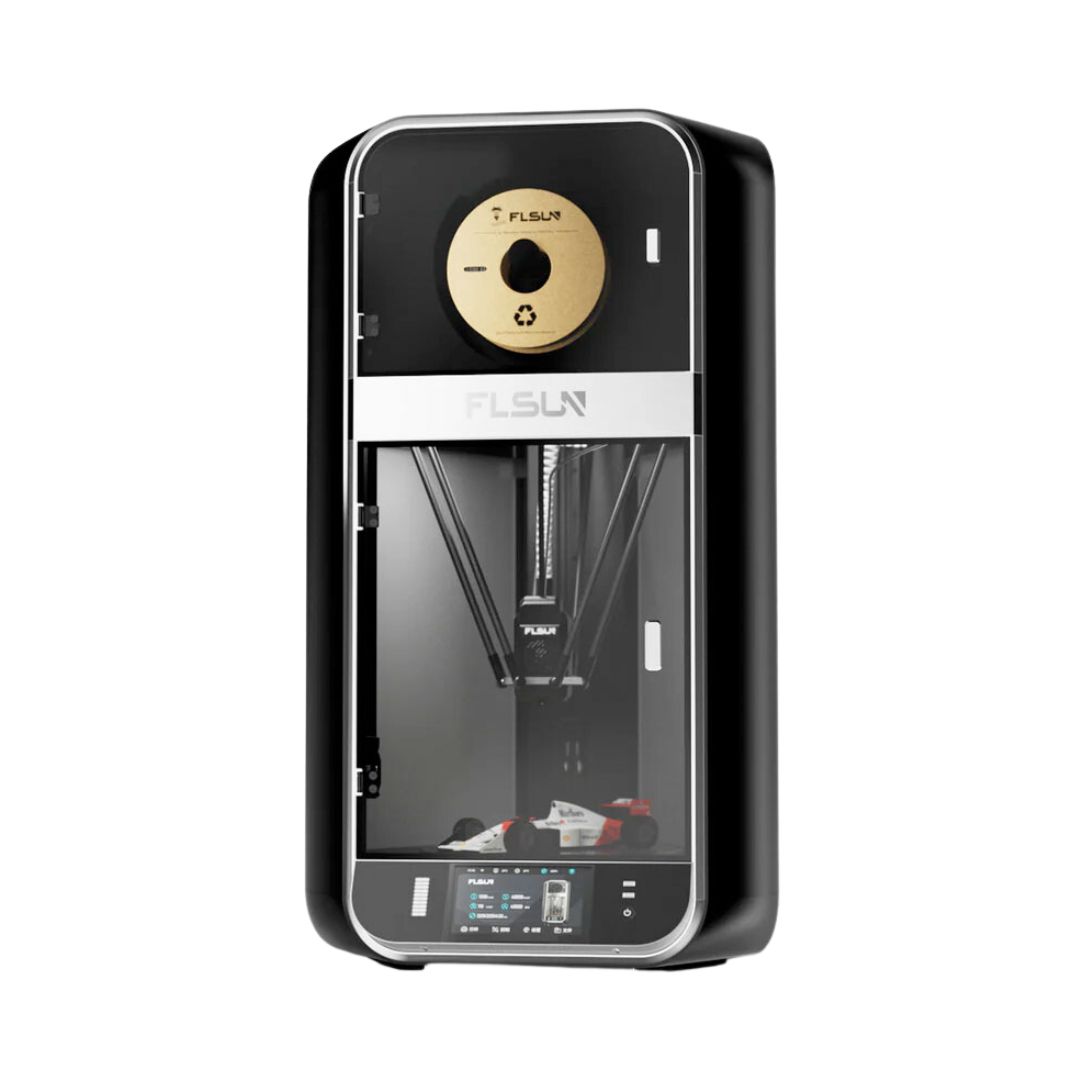Compare M5C vs S1 PRO
Comparison between the best 3D printers
Choose the best 3D printer at the best price. The cheapest 3D printers are here.
Buy a 3D printer here with 3D Fila.
 |
 |
|
| Model | M5C[BUY M5C] |
S1 PRO |
| Printing Material | Filament | Filament |
| Buy Filament for AnkerMake M5C | Buy Filament forFLSUN S1 PRO | |
| Estimated price | $399,00 | $1500,00 |
| Manufacturer | AnkerMake | FLSUN |
| Release Year | 2023 | 2024 |
| Print Volume [mm] | 220x220x250 | 320x320x430 |
| Printer Size [mm] | 466x374x480 | 450x450x1200 |
| Weight [kg] | 9,6 | 41 |
| Power Loss Recovery | YES | YES |
| Enclosed printer | NO | YES |
| Bed Leveling | Automatic | Automatic |
| Filament End Sensor | YES | YES |
| Bed type | Heated | Heated |
| Power supply system | Direct Drive | Direct Drive |
| Standard nozzle | 0,4 | 0,4 |
| Maximum Nozzle Temperature [°C] | 300 | 350 |
| Maximum Bed Temperature [°C] | 100 | 120 |
| Maximum printing speed [mm/s] | 500 | 1200 |
| Filament holder | YES | YES |
| Camera for supervision | NO | NO |
| Recommended filaments | PLA, PETG, TPU, ABS, PA, PLA-CF, PETG-CF, PA-CF | PLA, PETG, TPU, ABS, ASA, Nylon, PC, PP, HIPS |
| Recommended slicers | AnkerMake Studio (macOS, Windows), Simplify3D, Ultimaker Cura, PrusaSlicer | FLSun Slicer 2.0, Orca Slicer |
| Maximum Resolution [mm] | 0,1 | 0,01 |
| Processor | ||
| Display | Touchscreen 7'' | |
| Power Supply | 350 W | 500W 110-240V, 50/60HZ |
| Connectivity | Wi-Fi, USB-C, Bluetooth | Wi-Fi, USB, app FL Sun World |
| Operating systems | Windows, Linux e Macbook | Windows, Mac |
| Date of registration in the system | 2024-09-11 | 2024-12-16 |
| Release date | 2023 | 2024 |
| Extra features | The AnkerMake M5 printer stands out for its impressive print speed, reaching up to 500mm/s. It features AI print monitoring, an integrated camera for creating timelapses, auto-leveling bed with pressure sensor, direct extruder, flexible PEI-coated build plate, and Wi-Fi and USB-C connectivity. Assembly is quick and easy, and the printer is designed to deliver high print quality and ease of use. | The FLSUN S1 Pro is a high-speed Delta 3D printer, reaching up to 1200 mm/s with 40,000 mm/s² acceleration. It features a build volume of 320 mm (diameter) x 430 mm (height), a 350°C hotend, dual-zone heated bed up to 120°C, a 50°C heated chamber, and an active filament drying holder. It includes a camera for remote monitoring, integrated UPS for power-loss safety, a HEPA filter, and a 7 touchscreen interface. Perfect for large and complex projects. |
| Support for multiple colors and materials (AMS and CFS) | NO | NO |
Notes * |
||
| Cost-benefit | 7 / 10 | 7 / 10 |
| Hardware | 3.2 / 10 | 5.4 / 10 |
| Tela | . | . |
| Print volume | 3 / 10 | 4 / 10 |
| Performance | 4 / 10 | 9 / 10 |
| [BUY M5C] |
Conclusion |
| In comparing the AnkerMake M5C and the FLSUN S1 Pro 3D printers, several key factors emerge that illustrate their strengths and weaknesses, ultimately guiding potential buyers in making an informed decision. The M5C is positioned as a budget-friendly option, featuring a reasonable print volume, automatic bed leveling, and a solid range of compatible filaments. It offers impressive print speeds and focuses on user-friendly operation, making it suitable for beginners or hobbyists seeking a reliable machine. Its lightweight design enhances portability, and the quick assembly process further adds to its appeal. On the other hand, the FLSUN S1 Pro presents itself as a high-end option with a larger build volume and superior performance characteristics, including significantly higher printing speeds and advanced features such as dual-zone heated beds and a heated chamber. It caters more towards experienced users or professionals who require larger, more complex prints and additional monitoring capabilities. While the M5C scores well on cost-effectiveness and ease of use, the S1 Pro justifies its higher price with advanced features and capability for demanding projects. Ultimately, the choice depends on the user's specific needs—whether they prioritize affordability and simplicity or advanced performance and larger print capabilities. Both printers rate similarly in cost-benefit analysis, but the applications and potential user experiences they offer differ considerably. |

